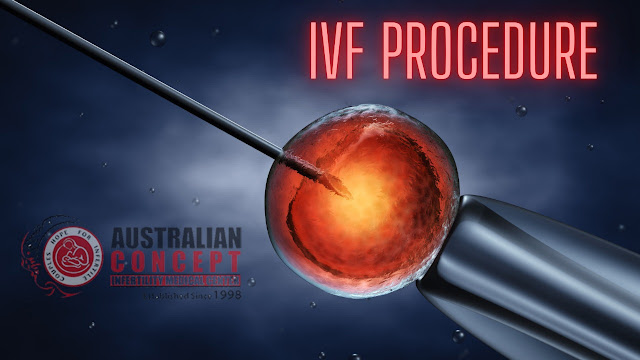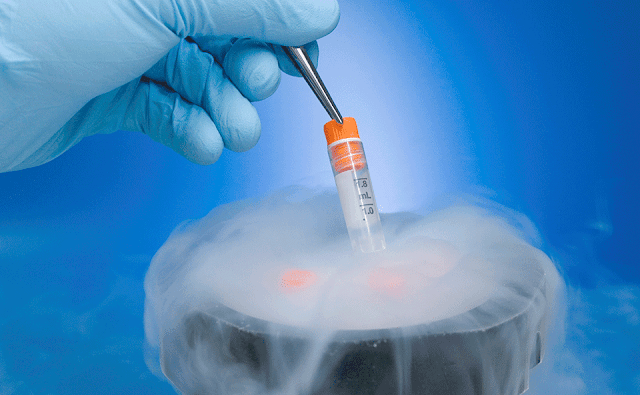Introduction
A
test-tube baby is produced through the in-vitro fertilization and it is the product of the successful human reproduction but it does not involve any sort of sexual intercourse instead it uses the medical interventions. In-vitro Fertilization is abbreviated as the IVF. It uses the reproductive technology and uses laboratory conditions and environment for fertilization. In 1978, the world’s first IVF baby was produced. After the production of the first IVF baby or test tube baby, many couples who do not conceive a child normally get high hopes.

What is IVF is known as the fertilization that takes place in the glass as in vitro means “within the glass” and this term is commonly used for laboratory experiments or conditions. It is opposite to the In vivo that means “within the living body or cell”. Nowadays,
IVF Procedure is considered as a fertility treatment but only less than 5% of couples can take this treatment. Through IVF, there are almost 6.5 million test tube babies are present that are as healthy and normal as typically conceived children. But there are still many ethical issues related to the test tube babies and in some religions, they are considered even as illegal (Henig, R. M. 2004).
History
Before the start of the in vitro fertilization technologies, some other methods were used for the baby’s development that includes artificial insemination. First artificial insemination was performed by the William Pancoast, who was a physician from Philadelphia and he got success in 1884 after the birth of the first test-tube baby from the artificial insemination. But this technology he did not get huge recognition till the middle of the twentieth century when in vitro fertilization has been researched thoroughly by multiple researchers and reports its success towards human reproduction. By 1960, in vitro fertilization was common practice towards the reproduction of various species of animals except for humans. After 1960 discussion on the test tube babies starts officially until 25 July 1978 but after that time 2 British medical researchers named as Robert Edwards and Patrick Steptoe starts working on the test-tube baby. Loise Brown was the first test-tube baby produced by the technique of in vitro fertilization. After his birth researchers of other countries also start working on the in vitro fertilization and their goals were to develop numerous fertility clinics (Moreton, C. 2007).

After that second
IVF Cycle or test tube baby was born on 4th of January 1978 and named as Alastair MacDonald. On June 23rd, 1980 Australia’s first IVF baby Candice Elizabeth Reed was born. America’s first IVF baby was born on December 28th, 1981 named Elizabeth Jordan Carr.
Procedure
Depending upon the IVF clinics the techniques can differ from each other but some steps are same as given below:
- A drug is given to the woman usually in the form of injection daily for 2 weeks in order to suppress the natural menstrual cycle.
- After that woman receives fertility drugs that contain fertility stimulation hormone (FSH) that makes the ovaries to produce more eggs as compared to normal conditions. The process in ovaries can be monitored by the vaginal ultrasound scans.
- Through a minor surgical procedure known as “Follicular Aspiration,” eggs are collected.
- Collected eggs are placed with the sperm and kept in a chamber whose environmental conditions are controlled. Sperm should enter into the egg after a few hours but it can directly inject into the egg and this technique is known as the intracytoplasmic sperm injection (ICSI). After fertilization, the embryo will form and 2 best embryos will be chosen for transfer.
- Before embryo transfer woman is given progesterone so her womb lining becomes prepared for the embryo transfer. The embryo will be transferred into the womb through a thin tube (catheter) that enters womb through the vagina. The embryo will stick on the womb lining and start to grow.
Factors Affecting IVF
The success rate of
IVF Process depends upon multiple factors that include age, period of trying to got pregnant, state of live birth occurred before, the strategy used for this purpose and level of vitamin D on the body of a woman who wants to become pregnant (Olivennes, F., Mannaerts, B., Struijs, M., Bonduelle, M., & Devroey, P. 2001).
Risks Related With IVF
There are many risks are involved in
IVF Treatment that includes side effects of medicines such as nausea and vomiting, difficulty in breathing, irritability, hot flashes, enlargement of the ovaries, abdominal pain and difficulty in sleeping. There are many health risks that are related to her mother as she can develop ovarian hyperstimulation syndrome (OHSS) by the use of drugs.
Multiple births can also take place when more than one embryo was being transferred into the womb of the mother and the birth of twins, triplets or more babies can have a preterm birth, low birth weight, risk of mother’s to develop diabetes doubles and blood pressure of mother can also be increased (Hart, R., & Norman, R. J. 2013).
Conclusions
An in vitro fertilization or test tube baby is a technique used for artificial fertility for the couples who are unable to conceive a child through normal ways or another way. On one side where it gives hope but on the other side it is not possible for every couple to go for IVF due to multiple factors such the rate of the treatment as it is very expensive and there are multiple risk factors are involved with IVF and it is also considered as unlawful in the eyes of a religious community.
References
Hart, R., & Norman, R. J. (2013). The longer-term health outcomes for children born as a result of IVF treatment. Part II–Mental health and development outcomes. Human reproduction update, 19(3), 244-250.
Henig, R. M. (2004). Pandora's Baby: How the First Test Tube Babies Sparked the Reproductive Revolution. University of Hawaii Press.
Kovacs, G. (2014). The success rate of IVF has significantly improved over the last decade.
Moreton, C. (2007). World’s first test-tube baby Louise Brown has a child of her own. London: Independent.”
Bonduelle, M., & Devroey, P. (2001). Perinatal outcome of pregnancy after GnRH antagonist (ganirelix) treatment during ovarian stimulation for conventional IVF or ICSI: a preliminary report. Human Reproduction, 16(8), 1588-1591.
Ruffenach, S. C. (2012). Test-Tube Baby. Embryo Project Encyclopedia.
Russell, I. W. (1948). Among the new words. American Speech, 23(3/4), 285-295.






Comments
Post a Comment